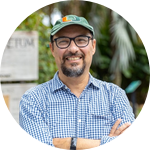About This Project
Residentes de Chile: Viene el Día de la Tierra! Si quiere hacer una donación en honor del Día de la Tierra (cualquier monto), indica esto en un mensaje con la donación, y le daremos una visita guiada al sector de Cascada de las Animas donde van los guanacos, en la primavera de 2017.
Phase two of Proyecto REGenera, restoring the "espinal" of Chile https://experiment.com/project...We will release guanacos in Cascada de las Ánimas Nature Sanctuary and monitor their socio-ecological impacts.
Ask the Scientists
Join The DiscussionWhat is the context of this research?
Guanacos (Lama guanicoe) are a wild relative of llamas. They used to live throughout Chile, until about 500 years ago, when they were almost exterminated. We think they had important effects on the ecology of central Chilean woodlands, and were also important to local indigenous people. Many Chileans still feel that guanacos are an important symbol of wilderness and Andean cultures, but their ecological impacts have been lost. This may have contributed to the degradation of many central Chilean woodlands. Following our experiment on the effects of guanaco browsing in silvopastoral savanna, we need to find the guanacos a new home, this time in the wild. This is our opportunity to learn how best to put our ideas into conservation practice.
Véase abajo para español.
What is the significance of this project?
Guanacos can have positive ecological effects by browsing on trees (stimulating the growth of some species), dispersing seeds (including, possibly, big seeds that have no other way of dispersing), making dung heaps that improve the soil, and making trails and dust bathing sites where herbs and flowers can establish. Guanacos have never been reintroduced into central Chile for ecological restoration. We will conduct socio-ecological monitoring of the guanacos' territory, measuring tree canopy growth and seedling establishment, endemic herbaceous species richness, soil nutrients, avian diversity, responses of rabbits and small mammals, and locals' and tourists' perceptions. This data will allow us to plan future conservation programs.
What are the goals of the project?
We need to prepare the groundwork for the reintroduction of the guanacos. This means building fences at Cascada de las Animas to keep the guanacos out of some areas. Once we release the guanacos, we plan to monitor their socio-ecological effects over several years. These experiences will allow us to understand the institutional and social requirements for a larger-scale program of release of guanacos in central Chile for ecological restoration. It will also help us put a timeline and more data behind the ecological impacts that can be expected.
Budget
The guanacos need to be transported from their current location in Altos de Cantillana to Cascada de las Ánimas. We will need to pay for a transport vehicle as well as veterinary care and assistants.
We need 400 meters of fences. The fences are not to keep the guanacos in. Rather, the fences will protect some human-use areas from the guanacos, to reduce human-guanaco conflicts. We have already received $1000 from the Center for Applied Ecology and Sustainability (Santiago) to cover part of the cost of the fences. In addition, Cascada de las Ánimas will provide the labor to build the fences. GPS collars will be donated by colleagues.
Any additional funding we receive will go towards establishing a baseline of socio-ecological monitoring of the site, for example through buying camera traps, paying for soil sample analysis, and paying research assistants. We hope to fund long-term ecological monitoring through the Institute of Ecology and Biodiversity and other funds.
Endorsed by
 Project Timeline
Project Timeline
Mar 20, 2017
Project Launched
Apr 17, 2017
Monitoring phase I (pre-release/ fall)
Apr 28, 2017
Building the fences
May 01, 2017
Transport and release of guanacos
Aug 14, 2017
Monitoring phase II (post-release/ spring)
Meet the Team
Affiliates
Affiliates
Team Bio
Collaborators include Cristián Bonacic, his team, and Fernanda Romero and don Gabriel at Altos de Cantillana Nature Sanctuary. Students Jorge Ramos and Tomás Abbott conducted observations, and Elise Dewar volunteered. Adrien Lindon's MSc contributed a social perspective. Now we are working with members of the family owning Cascada de las Ánimas Nature Sanctuary.
We are always looking for interested students, volunteers, and collaborators!
Meredith Root-Bernstein
I am an interdisciplinary conservation scientist with an interest in community ecology, animal behavior, anthropology of human-environment relationships, and policy. I follow both a socio-ecological systems and a biocultural approach. My long-term projects include the restoration and rewilding of the "espinal" Chilean silvopastoral system, and multifunctional community-led wetland conservation in the Po Delta, Italy.
I am also involved in a number of interdisciplinary collaborations linking natural history, biology, anthropology and art, with the Aarhus University Research on the Anthropocene group, of which I was formerly a member.
As part of my research on conservation in Chile, I am currently working on two projects in addition to this one. One is funded by the National Geographic Society and focuses on building local capacity to conserve rare frogs. I am also starting a project on the conservation and management decisions of farmers in central Chile.
I grew up in Michigan where I enjoyed all the animals in our backyard. Since then I have lived in the UK, Chile, Denmark, and I now live in Paris, France.
Matías Guerrero-Gatica
I am passionate for the study of the environment. Particularly I am interested about the relation between humans and nature, what we call social-ecological systems.
My first approach to conservation biology and particularly, with management of natural resources, was with fishing communities, intending to understand human impact on open-access coastal areas.
I also started to research forest ecosystems, investigating collective actions of local communities in the southern part of Chile.
Now I am developing a project in order to understand the impact of human practices in a territory where an important city in southern Chile extracts water for human consumption.
Further, I have been involved in the research on regeneration patterns in Chilean mediterranean ecosystems through the first phase of this rewilding experiment with Guanacos.
Additional Information
Los guanacos (Lama guanicoe) son parientes salvajes de las llamas. Solían vivir por todo Chile, hasta alrededor de 500 años atrás, cuando eran casí exterminados. Pensamos que tenían impactos importantes sobre la ecología de los bosques y espinales de Chile central. Estos impactos probablement han incluido la stimulación de algunas especies de árbol por ramoneo, la dispersión de semillas (incluso semillas grandes que ahora faltan dispersadores y por ende son de especies raras), la formación de montículos de fecas (defecaderos) que mejoran la calidad del suelo, y la formación de caminos y baños de polvo que son lugares de establecimiento de flores. Además los guanacos antiguamente eran importantes para los indígenas. Muchos chilenos piensan hoy en día que el guanaco es un símbolo de paisajes salvajes y de las culturas andinas. Sin embargo, sus impactos ecológicos se han desaparecidos. Su desaparición puede haber contribuido a la degradación de los bosques chilenos. Después de nuestro experimiento sobre los efectos del ramoneo de los guanacos en el espinal, necesitamos encontrar un nuevo hogar para los guanacos, esta vez libres en la naturaleza. Es nuestra oportunidad de aprender como mejor poner en práctica nuestras ideas para la conservación. Necesitamos su ayuda para poder empezar esta experiencia. Esperamos luego continuar un monitoreo socio-ecológico en el mediano plazo.
Project Backers
- 37Backers
- 105%Funded
- $1,558Total Donations
- $42.11Average Donation



